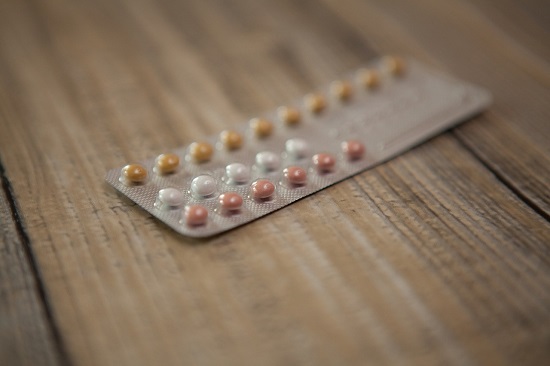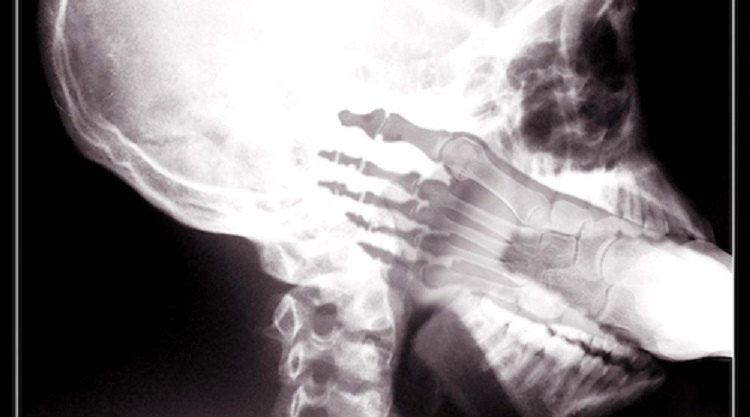I vividly recall the most unexpected reaction I got when I told a friend that we were pregnant with our daughter. He asked me not to mention it in front of his wife. He explained that she was in the midst of an emotional crisis. Their attempts to conceive had been unsuccessful, and the doctors suspected she had fertility issues.
As he shared more about their ordeal, he said that they wondered if her years on birth control could have had anything to do with it. I agreed that that seemed like a logical possibility. (This was a decade ago, long before I cared one way or the other about The Pill). We discussed how odd it would be, if birth control could cause fertility issues, that we had never heard anything about it. And, like so many ‘common sense’ questions about hormonal birth control, we shrugged it off.
Fertility Fatigue
That conversation faded into the recesses of my mind until I produced a medical conference a few years later. The conference focused on several inflammatory diseases. I noticed a trend in how carefully the presenters handled the subject of prescribing prednisone, a synthetic corticosteroid. Anytime it was recommended as a treatment, the presenter always included the typical disclaimers – ‘go with the lowest dose possible,’ ‘minimize the duration,’ and ‘taper the patient off the drug’… I was familiar with adrenal fatigue and understood their motivation.
Even low doses of prednisone can upset the body’s delicate endocrine system. Our body responds to the influx of those synthetic steroids by reducing the production of cortisol and other adrenal hormones. Extended use of the drug or sudden cessation can cause an adrenal crisis, and, in some cases, the damage is permanent.
As I contemplated how this flood of synthetic hormones overrides the production of natural hormones, I recalled the previous conversation with my friend. Over the next few days, I struck up conversations with a number of doctors attending the conference. I told them I was curious about the frequent mention of prednisone and how the presenters were clearly concerned about preventing adrenal fatigue. Then, I drew a parallel and asked a simple question, “Should we have the same concern about how the synthetic hormones in birth control may be affecting the production of those hormones?”
Each doctor had virtually the same response. First, a perplexed look crossed their face. Then, they admitted, “That’s a good question. I never really thought about it.”
Delayed Fertility
That’s a fitting response because doctors generally don’t think about it. As side effects go, delayed fertility and even infertility rank low on the totem pole of consequences tied to hormonal birth control. Certainly, doctors are not going to give it the attention they might give other iatrogenic conditions linked to birth control, like breast cancer or strokes. However, the problem isn’t that infertility has been neglected or underestimated so much as it’s been completely dismissed.
Our cultural paradigm tells women that planning their family is as easy as 1-2-3.
Step 1: Take The Pill until you’re ready for kids.
Step 2: Stop taking The Pill.
Step 3: Start your family.
But, it isn’t always that easy. Since doctors are unaware of the connection, they frequently assure patients that their birth control couldn’t have caused infertility. A persistent patient might turn to Google, but those results are just as confusing. One top hit says, “There’s no evidence that long-term use of the birth control pill interferes with fertility,” while another states, “It can take a few extra months to start menstrual cycles…” but confidently adds that “birth control doesn’t hurt your chances of having a baby in the future.”
As Old as The Pill
When I began researching birth control in earnest, my focus was on autoimmune disease, but it didn’t take long to discover that infertility was actually one of the original concerns about The Pill. In fact, Barbara Seaman devoted an entire chapter to it in her famous book, The Doctors’ Case Against The Pill.
She wrote:
It is no longer just a vague worry but an established fact that a certain number of women simply do not start having their periods again after they stop taking the pill. Others have irregular or scanty periods. In either case, they may find that they cannot conceive. They are sterile.
She introduced readers to Dr. M. James Whitelaw, a fertility expert who fought through bitter attacks from some in the medical community to publish a report on a phenomenon he called “oversuppression syndrome” in The Journal of the American Medical Association (JAMA) in February 1966. After its publication, one well-known doctor responded, “Now, Dr. Whitelaw is regarded as a prophet. We all admire his courage and persistence in smoking this thing out.”
When the Nelson Pill Hearings rolled around in 1970, Congress called on Dr. Whitelaw to testify. He explained “oversuppression syndrome” in layman terms, “Any part of the body which is not used, or little used, over a protracted period of time leads to so-called ‘disuse atrophy.’” In this case, the atrophy occurs in the lining of the uterus, and Dr. Whitelaw estimated that it contributed to a 10-percent increase in the rate of infertility.
Dr. Roy Hertz, an FDA advisor, subsequently testified that the introduction of hormonal birth control also disturbed the balance of microscopic activity in the endometrium. These structural and functional abnormalities sometimes lead to cancer of the endometrium, but they also contribute to an atrophy of the endometrium that sometimes leads to permanent infertility.
Recent history hasn’t given us many studies that examine the link between hormonal contraceptives and infertility. However, a 1997 study came to the rather dubious conclusion that, “The return of fertility for women who discontinue oral contraceptives takes longer as compared with women who discontinue other methods of contraception.”
Modern research may have dropped the ball on “oversuppression syndrome,” but it has uncovered some other serious fertility-related concerns.
The Pill: It’s Not Just for Women Anymore
In 1993, Scottish and Danish researchers published a report in the British Medical Journal, The Lancet, with the headline-grabbing announcement that we now live in a “Sea of Estrogens.” They claimed that synthetic chemicals in the environment were mimicking estrogen, which was having a deleterious affect on male fetuses in the womb. They pointed to environmental pollutants like PCBs, detergents, dioxins, soy, and oral contraceptives. The media mostly reported on the other chemicals while downplaying The Pill, despite its being such a prolific and potent synthetic chemical designed specifically for the purpose of mimicking natural estrogen in the body.
The very next year environmental scientists, led by John Sumpter, announced that male fish in 28 rivers across Britain were being ‘feminized’ by pollutants. The Independent reported:
Professor Sumpter is studying fish because their reproductive systems have much in common with humans. Fish and men, for example, both have two testes – the sperm-producing organs – and anything that can disrupt semen-making in fish is likely to have a similar impact on men.
The article stated that the Department of the Environment, which funded the research, told scientists not to reveal the names of the affected rivers for fear of causing panic. I can only surmise that the desire to prevent panic must also explain how this dubious statement made it into the article, “The contraceptive pill is not thought to be responsible for the oestrogens in sewage effluent because women excrete its hormones in a biologically inactive form that has no effect on fish.”
Environmental Pollutants
However, in 2002, Susan Jobling of Brunel University focused the attention squarely on hormonal birth control. Her team demonstrated that fish populations crashed in relation to sewage plant discharges along tributaries feeding the Thames River. And, Jobling wasn’t shy about connecting the dots to make this a human problem as well. She stressed that human sperm counts had fallen by half, in the time since women had started taking birth control.
Charles Tyler, a member of her team from Exeter University, added:
Synthetic oestrogen, ethanol oestradiol, is exquisitely potent at very, very low concentrations, between 50 and 100 times as potent as natural oestrogen. The level at which we can measure the effects in fish are below the levels which we can detect the chemical in drinking water, so we cannot be sure that some of these compounds, even at very low concentrations, are not getting into our drinking water.
Based on their research, the European Union classified hormonal contraceptives as environmental pollutants, and the European Parliament proposed action that would require municipalities to upgrade existing sewage systems to remove these microbial pollutants. However, when the discussion turned to having pharmaceutical companies foot the bill, the powerful Big Pharma lobbying group went to work to have the proposal dismissed.
Equal Opportunity Infertility
The Brits were the first to discover this troubling phenomenon. However, this clearly isn’t just a European problem.
Consider this. Eighteen million women in the U.S. take some form of hormonal contraceptive each day. Ethinyl estradiol, the synthetic hormone used in these drugs, has a biological activity about 100 times that of our natural hormones. In order to effectively prevent pregnancy, these molecules must resist degradation in stomach acid and pass through the body virtually unchanged. Consequently, eighteen million women flush these powerful chemicals into our sewers every day… now that’s a sea of estrogens!
In 2007, Canadian researchers completed a seven-year study in which they simulated the affects of all this hormonal flushing. They calculated the amount of ethinyl estradiol that women in a small city would pass through the sewage plants, and released that amount into an isolated test lake on a daily basis. It resulted in the “near extinction” of the fathead minnow population due to the feminization and transgendering of male fish. And, the consequences had started their ascent up the food chain in a measurable way, specifically in the feminization of mink frogs and green frogs.
In 2006, the United States Geological Survey conducted tests on smallmouth bass here at home, in the Shenandoah and Monocacy Rivers, and found that more than 80-percent of all the male bass living in these waterways were growing eggs.
The Estrogen Is Potent, But We’re Inactive
Over a decade has passed since the litany of alarming reports, warnings, and predictions began to flow. So, what have we done about it?
Well, in 2012, Tim Worstall, a contributor to Forbes, suggested women taking hormonal birth control should pay a $1,500-per-year tax to support the upgrade and maintenance of sewage plants to remove the harmful pollutants from our waterways.
That’s it… That’s the extent of our progress on this very frightening situation – an occasional opinion on who should pay for sewage plant upgrades.
Meanwhile, the headlines from 2017 give us a sense of how far up the food chain the consequences have climbed. The worrisome news began in June, after the CDC released birth rate statistics. The Washington Post blasted this headline, “The U.S. fertility rate just hit a historic low. Why some demographers are freaking out.”
By mid-summer, headlines in The Mirror and the New York Times told us, “Sperm Counts in Western Men Have Dropped Over 50 Percent Since 1973.”
And, as I’m writing this (September 12), Newsweek just posted this story, “Male Fertility Crisis in U.S. Has Experts Baffled.”
Maybe this is the year we will take notice. More importantly, maybe this is the year we will do something about it!
Oh, and the next time a friend wonders out loud whether birth control could have contributed to their infertility, the short answer is YES.

The FDA approved The Pill despite it not being proven safe. Today, it has been linked to everything from blood clots and cancer to lupus and Crohn’s disease — and still has not been proven safe.
This book explores the medical and historical disconnects that brought us to this point.
Last updated on October 21, 2023 at 9:38 pm – Image source: Amazon Affiliate Program. All statements without guarantee.
We Need Your Help
More people than ever are reading Hormones Matter, a testament to the need for independent voices in health and medicine. We are not funded and accept limited advertising. Unlike many health sites, we don’t force you to purchase a subscription. We believe health information should be open to all. If you read Hormones Matter, like it, please help support it. Contribute now.
Yes, I would like to support Hormones Matter.
Image by Arek Socha from Pixabay.
This article was published originally on September 18, 2017.















